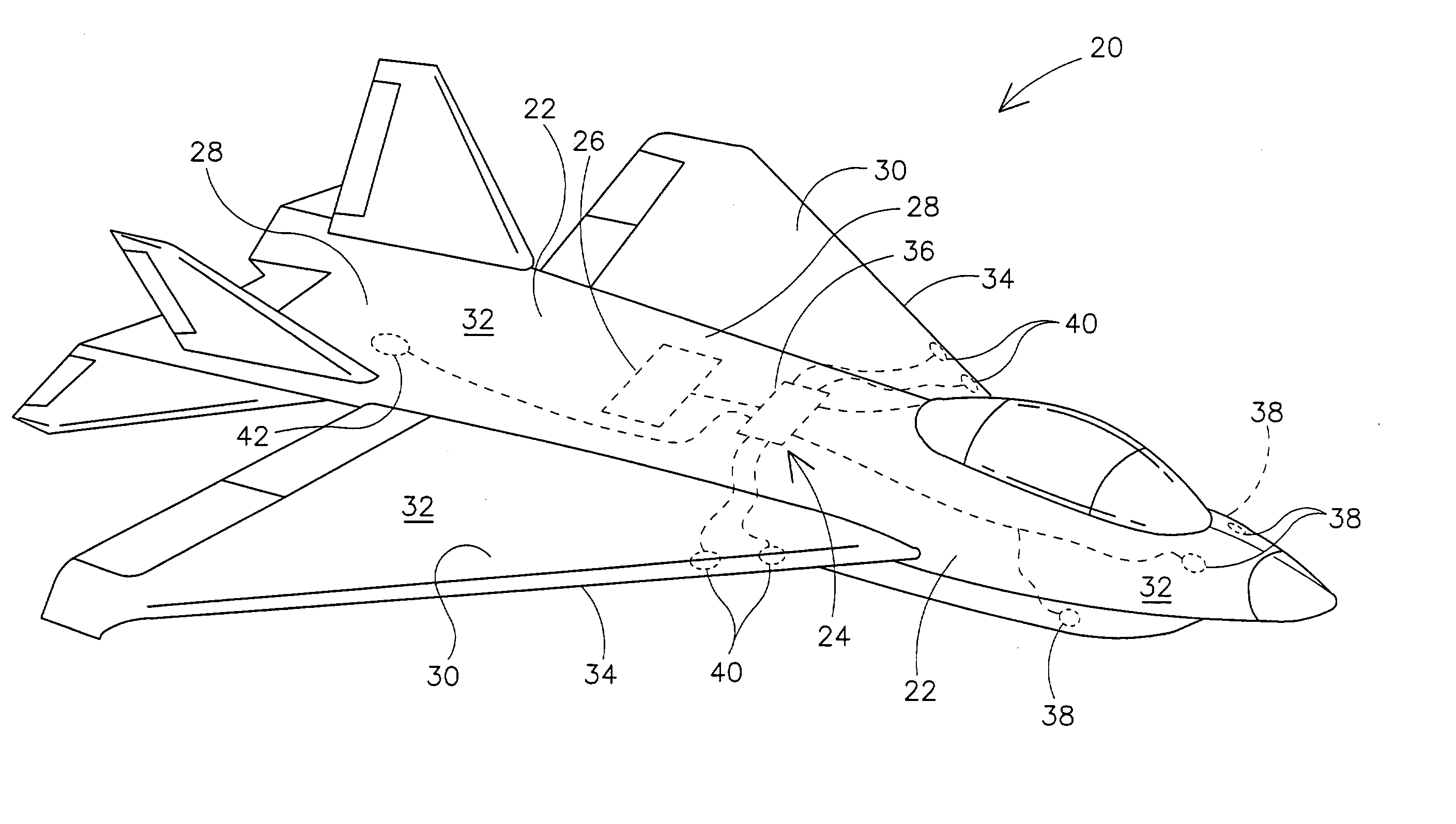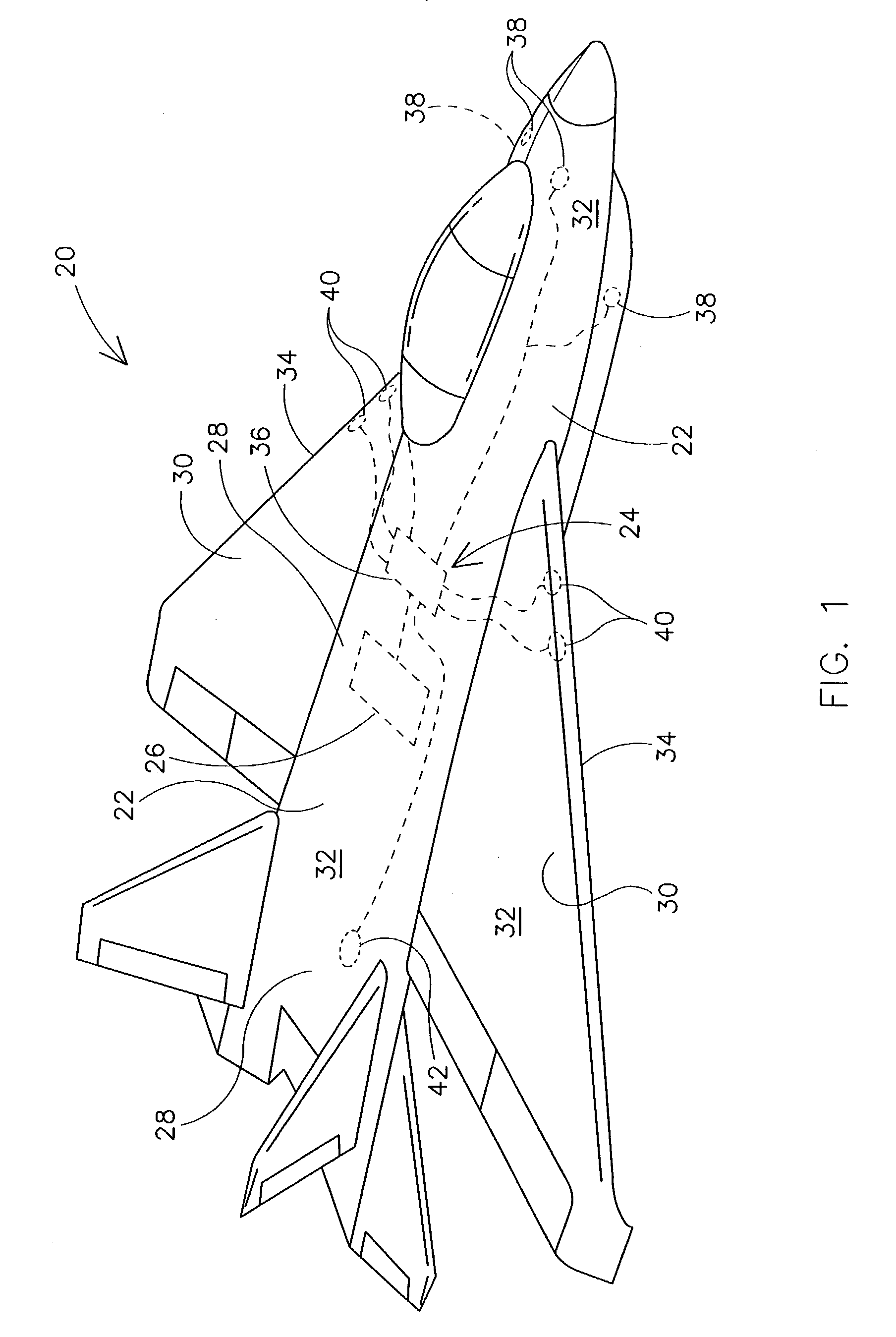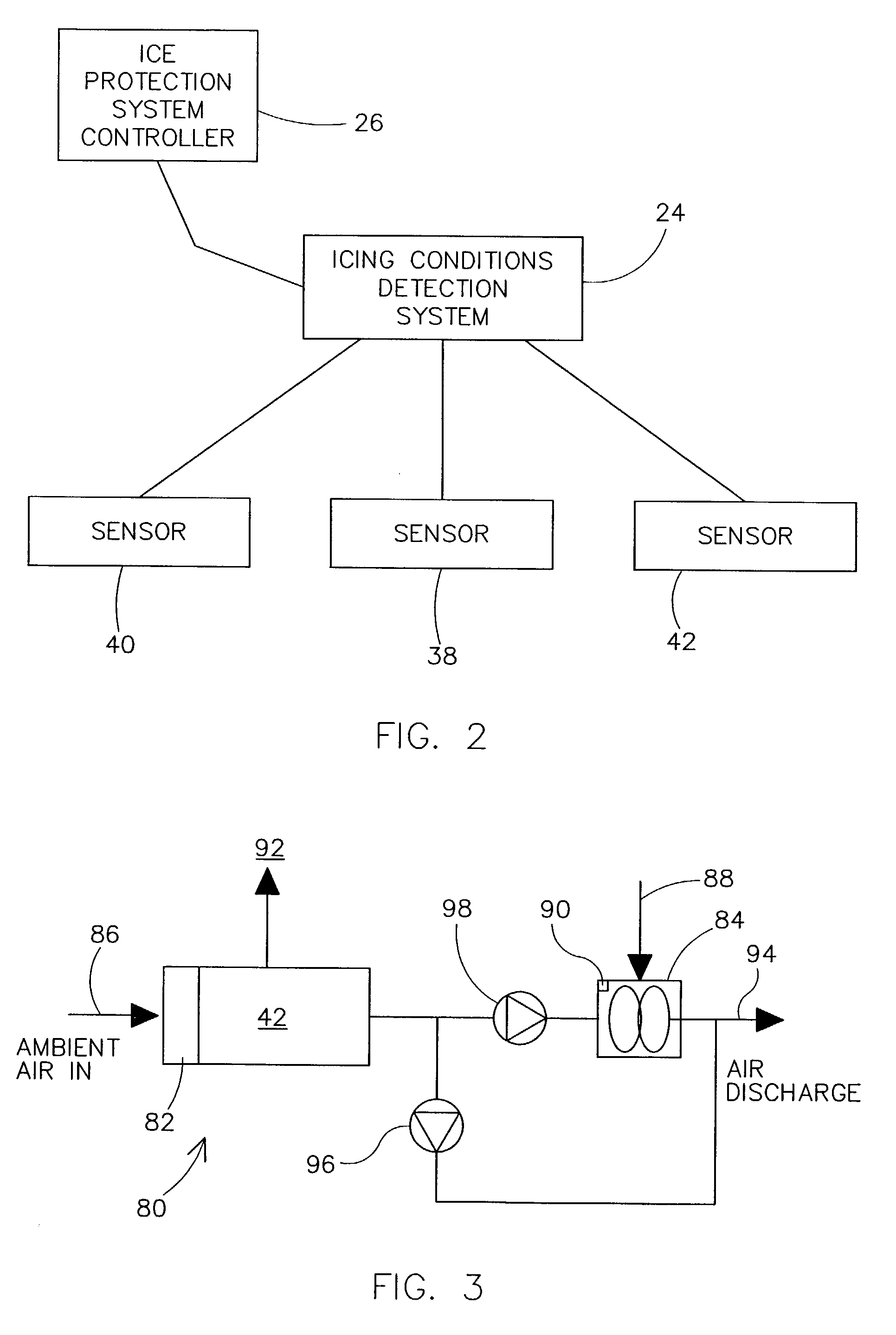Method and apparatus for detecting conditions conducive to ice formation
a technology of detecting conditions and equipment, applied in emergency equipment, non-canopied parachutes, de-icing equipment, etc., can solve problems such as significant alteration of flight characteristics, ice formation on critical flight surfaces, unsafe flying conditions
- Summary
- Abstract
- Description
- Claims
- Application Information
AI Technical Summary
Problems solved by technology
Method used
Image
Examples
Embodiment Construction
[0018]Referring now to the drawings, and more specifically to FIGS. 1 and 2, an aircraft is designated in its entirety by the reference numeral 20. The aircraft 20 includes an airframe 22, an icing conditions detection system (ICDS), generally designated by the reference numeral 24, and an ice protection system controller 26. The airframe 22 includes a fuselage section 28 and a pair of wings 30 extending outwardly from the fuselage 28. Both the fuselage 28 and the wings 30 are covered in a skin forming an outer surface 32 of the aircraft 20. Each wing 30 includes a leading edge 34. The ice protection system controller 26 is operatively connected to an ice protection system (not shown) to control operation of the ice protection system. The ice protection system is operatively connected to the critical sections of the aircraft outer surface 32, for example, wing leading edges 34 and engine inlet surfaces (not shown), to eliminate ice from the surface 32 in any suitable manner. It shou...
PUM
 Login to View More
Login to View More Abstract
Description
Claims
Application Information
 Login to View More
Login to View More - R&D
- Intellectual Property
- Life Sciences
- Materials
- Tech Scout
- Unparalleled Data Quality
- Higher Quality Content
- 60% Fewer Hallucinations
Browse by: Latest US Patents, China's latest patents, Technical Efficacy Thesaurus, Application Domain, Technology Topic, Popular Technical Reports.
© 2025 PatSnap. All rights reserved.Legal|Privacy policy|Modern Slavery Act Transparency Statement|Sitemap|About US| Contact US: help@patsnap.com



